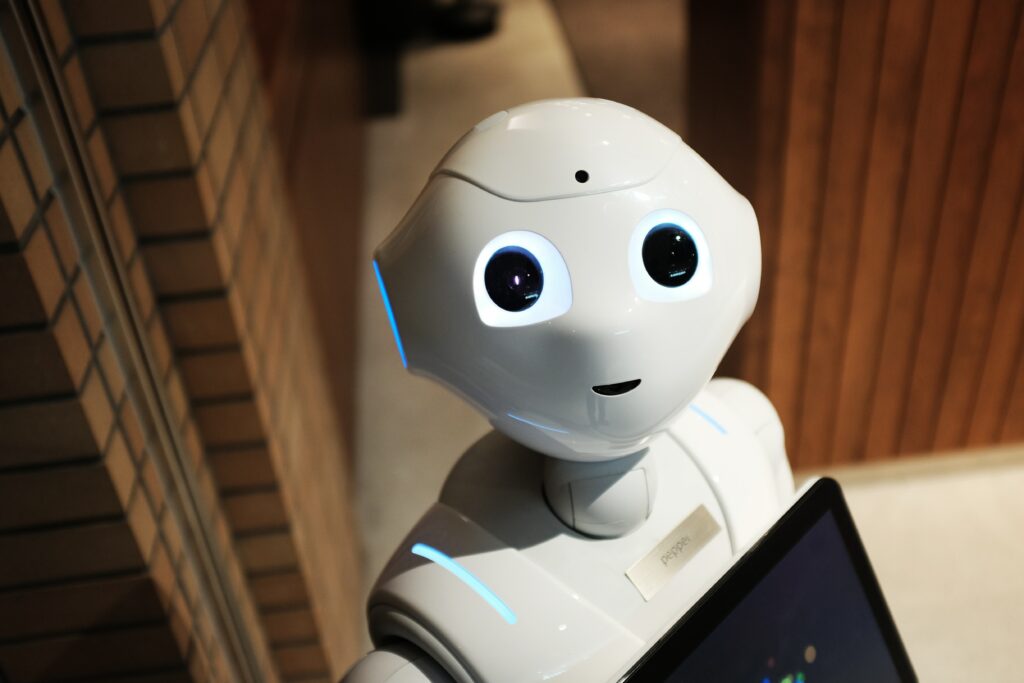Across all industries, robots are making a profound impact. Shortly, robots will become more prevalent in our everyday lives, affecting economic development and changing the industrial structure.
How robotics change our lives
Robots will work with us side by side
The robotics industry is one of the rare technologies that can produce the same impact as the Web Revolution. Several decades from now, robots will be as ubiquitous as today’s computers and may even change the future. Many companies are relying increasingly on robots to help with their work, such as Apple, Lenovo, Tesla, Foxconn, etc.
Robots will assist the disabled in performing basic tasks like shaving or cooking without the assistance of family members or caregivers. Humans are no longer the only members of society. Robots will become our colleagues, applying for jobs based on their skills and changing society’s status quo.
Robots will significantly improve productivity
Some countries are already experiencing an aging society, and the number of workers is decreasing. By using robots, it will not only solve the labor shortage but also increase labor productivity.
The future will see better use of robotics, resulting in more and more jobs being replaced by machines. With the changing division of labor, human workers will have less work to do with the advent of service robots. People will be more inclined to work in design and management. Automation of many specific tasks will result in higher productivity since robots are more efficient than humans in many particular situations.
People will have more time for studying and leisure, making our lives more enjoyable.
Robots will change manufacturing competitiveness
A robot-based manufacturing system might be a more competitive alternative to outsourcing to low-wage nations. The Chinese manufacturing, for example, has always made up a large share of the global market thanks to lower labor costs. The United States is aggressively using robots in the manufacturing environment to improve productivity, offset high labor costs, and resurrect the manufacturing industry.
Rethink announced in August 2012 that its “Baxter” robot can be programmed directly with little training. Installation and operations costs have been reduced, resulting in more applications for automation technology in the future. By using robots, manufacturing management is becoming more flexible, lean, and responsive to market trends. It is worth reflecting on how China will continue to be a world factory in the future.
Better healthcare at home and in hospital
Healthcare is already benefiting from robotics. A medical robot can improve disease prevention, patient recovery, and even the process of visiting a doctor at a hospital and will provide a broader range of access to medical care. Soon, telemedicine will be available to patients at home.
Presently, robots can serve as a computer to carry out precise and targeted medical treatments. In integrating computers and robots, surgery and interventional radiology may experience the same revolutionary changes as manufacturing decades ago after automation technology became available. Compared to traditional methods, rehabilitation robots are more effective because they allow for more intensive treatments to continually meet the patients’ needs.
Robot technology is developing in order to promote home care, delay Alzheimer’s disease, provide companionship for the elderly, and alleviate their loneliness as the population ages. Additionally, robotic sensing and activity modeling methods can be precious for early detection, continuous monitoring, and targeted intervention and treatment. By reducing trauma and side effects, medical robots can improve recovery efficiency and speed up recovery times. Interventions at the micro-scale and smart prostheses can reduce the costs and impact of a disability on families, caregivers, employers, and society.
Technological monopoly will appear
“Cloud Robots” was introduced in 2010. The cloud provided a new approach to data management and processing. “Robots are not islands” -this view has received widespread attention from mainstream companies like Google and Cisco. For robots to perform their functions at their best, they must be based on big data and cloud computing. Increasing network value exceeds scaling expansion in cloud computing due to network effects.
In time, artificial intelligence will become smarter as more people continue to use it. A company that enters this virtuous circle will grow so large and develop so quickly that it will become a dominant force in its own right, even among emerging competitors. Due to this, artificial intelligence in the future will be dominated by a limited number of oligarchs, and cloud-based multi-purpose commercial products will dominate the market.
Robots will change traditional industries and talent structures
Robotics will further erode traditional industries as they mature. Just as e-mail replaces mailed letters, traditional industries must either be intelligently transformed or die out. Through the application of robots in various fields, the industry will undergo an overall transformation and upgrading. It will also trigger a new round of innovative layouts and investments and a change in the talent structure. High-tech talent is more readily available, and duplicate labor is less necessary.
Robots are the catalyst for new industries
The robotics industry will lead to new demands for raw materials, big data, integrated circuits, high-end computing, virtual reality, communications, etc., which will help spur new high-tech industries. As robot technology continues to evolve, users will be able to realize their needs that they would never have dared to imagine before.
The industrialization of drones, service robots, medical robots, self-driving cars, wearable devices, and other products will result in new consumer demands just as mobile phones and computers have become everyday consumer goods. Statistics show that this will be a massive market in trillions of dollars.
Wireless charging robotics
More robots are using wireless charging technology because it offers numerous advantages over traditional charging methods.
Wireless charging eliminates the need for physical cables, which often become damaged or tangled leading to faulty charging.
It can also improve the safety of robots in hazardous environments by eliminating the need for exposed charging ports, which could pose a risk of electrical shock.
Wireless charging saves time and effort because robots can charge without human intervention.
Wireless charging technology is continually advancing, making it possible for robots to charge faster and more efficiently, enabling them to stay operational longer, making wireless charging the preferred choice for both industrial and personal robots.





